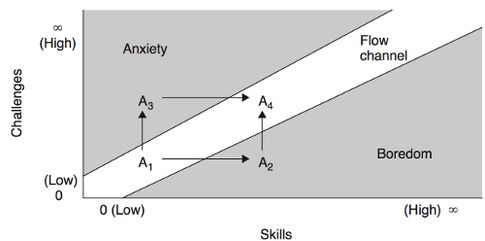今天实在想不出做什么了,翻了翻小游戏,看到了原创的颜色一次性于是,就想到何不做这个呢???废话不多说,上代码!!!!!#include#includeusingnamespacestd;intmain(){cout>yanse;if(yanse==1){cout<<"跳转中......"<
windows下使用vscode+cline插件体验MCP,体验使用AI控制浏览器,踩坑记录(至少让你节省3个小时弯路版)(喂饭级别)
几道之旅
人工智能智能体及数字员工windowsvscodeide人工智能
为什么网上天天说MCP,你这儿却一点动静都没有?1️⃣人家很早之前就用上了制定标准的Claudedesktop,这玩意儿在咱这儿用不了。对策:使用vscode+cline+deepseek(或其它同级别国产大模型deepseek-V3其实有时比R1效果还好)2️⃣人家也Claude,但人家能用Cursor,咱太穷了,用不了。对策:使用vscode+cline+deepseek(或其它同级别国产大模
如何在MySQL中创建定时任务?
数据库mysql
在mysql中我们可以可以通过事件调度器(EventScheduler),让MySQL定时为我们执行一些任务。例如:在MySQL中实现每天凌晨0点定时清空指定的test表,并在一个月后自动停止该定时任务。以下是完整步骤:步骤1:启用MySQL事件调度器默认情况下事件调度器可能关闭,需手动启用:--临时启用(重启失效)SETGLOBALevent_scheduler=ON;--永久启用(修改配置文件
使用sqlite创建数据库
@云初
sqlite数据库database
使用sqlite创建数据库#sqlite3.exe数据库名.dbSQLiteversion3.36.02021-06-1818:36:39Enter".help"forusagehints.sqlite>在sqlite里面创建一张表并添加数据#.databases#.tables#createtableperson(idint,namevarchar(20),addressvarchar(20))
深度革命:ResNet 如何用 “残差连接“ 颠覆深度学习
安意诚Matrix
机器学习笔记深度学习人工智能
一文快速了解ResNet创新点在深度学习的历史长河中,2015年或许是最具突破性的一年。这一年,微软亚洲研究院的何恺明团队带着名为ResNet(残差网络)的模型横空出世,在ImageNet图像分类竞赛中以3.57%的错误率夺冠,将人类视觉的识别误差(约5.1%)远远甩在身后。更令人震撼的是,ResNet将神经网络的深度推至152层,彻底打破了"深层网络无法训练"的魔咒。这场革命的核心,正是一个简单
乐观锁与悲观锁的 MyBatis-Plus 实现
drebander
mybatis-plusmybatis
在高并发场景下,数据库的并发控制是确保数据一致性的关键。乐观锁和悲观锁是两种常见的并发控制机制,它们分别适用于不同的场景。MyBatis-Plus提供了对乐观锁的支持,使得开发者可以轻松实现并发控制。本文将详细介绍乐观锁与悲观锁的概念、MyBatis-Plus如何实现乐观锁、实现乐观锁的场景,以及如何使用@Version注解进行版本控制。1.乐观锁与悲观锁的概念1.1乐观锁(OptimisticL
扩展 MyBatis-Plus 支持的查询条件
drebander
mybatis-plus数据库mybatispythonMybatis-Plus
MyBatis-Plus是一个强大的MyBatis增强工具,提供了丰富的查询条件构造器和便捷的CRUD操作。然而,在实际开发中,我们可能会遇到一些复杂的查询需求,需要扩展MyBatis-Plus的功能。本文将详细介绍如何扩展MyBatis-Plus支持的查询条件,包括自定义SQL查询、Lambda查询与条件构造器扩展、动态查询条件的实现,以及扩展自定义查询方法与接口。1.自定义SQL查询1.1使用
【css酷炫效果】纯CSS实现动态云雾效果
冰夏之夜影
css前端
【css酷炫效果】纯CSS实现动态云雾效果缘创作背景html结构css样式完整代码效果图想直接拿走的老板,链接放在这里:上传后更新缘创作随缘,不定时更新。创作背景刚看到csdn出活动了,赶时间,直接上代码。html结构css样式body{margin:0;min-height:100vh;}.cloud-bg{position:relative;height:100vh;background:ra
智能形状匹配技术全解析:从经典算法到深度学习与神经形态计算【超级详细版】
AI筑梦师
计算机视觉算法深度学习人工智能机器学习计算机视觉python
智能形状匹配技术全解析:从经典算法到深度学习与神经形态计算1.引言1.1研究背景在计算机视觉、模式识别、医学影像分析和自动驾驶等领域,形状匹配是核心任务之一。然而,现实世界的形状往往存在可变性(Variability),主要体现在以下几个方面:形变(Deformation):物体可能由于柔性材料、外力作用或生物运动发生非刚性形变。尺度变化(ScaleVariation):目标形状在不同场景下可能大
每日实战:python爬虫之网页跳转-以某博为例
代码CC
python爬虫python爬虫pandas开发语言
一、项目背景与核心需求通过逆向分析微博热榜接口,实现实时热搜数据抓取,重点解决:话题跳转链接参数缺失问题页面数据清洗规范化处理多维度数据采集存储二、网页跳转爬虫实现原理2.1跳转链接生成逻辑原始热搜词→"雷军刚知道柯洁定了SU7Ultra"处理流程:1.添加话题标识→#雷军刚知道柯洁定了SU7Ultra#2.URL编码→%23雷军刚知道柯洁定了SU7Ultra%233.添加搜索参数→&t=31生成
mysql8.4.4+keepalived高可用部署
平山海D
mysql
提示:文章写完后,目录可以自动生成,如何生成可参考右边的帮助文档文章目录前言一、安装mysql(两节点都安装)二、安装keepalived(两节点都安装)三、修改mysql配置四、修改keepalived配置五、验证备注前言内网环境下,mysql8.4.4+keepalived高可用部署,仅作备份记录一、安装mysql(两节点都安装)从mysql官网离线下载mysql-8.4.4-1.el8.x8
使用 Vue 2.x + Element UI 搭建后台管理系统详解
不知名靓仔
vue.jsui前端
引言Vue.js是一个非常流行的前端框架,而ElementUI是基于Vue2.x的一套完整的UI组件库,非常适合用来构建企业级的后台管理系统。本文将详细介绍如何使用Vue2.x和ElementUI来搭建一个后台管理系统,包括项目初始化、路由配置、状态管理、权限验证等关键步骤。vue2后台管理项目源码合集下载地址见最下方1.环境准备确保你的开发环境中已安装Node.js和npm。接下来,我们将使用V
Vue.js + Element UI 实战:手把手教你实现评论关键词过滤功能,新手必学!》 《前端开发必备技能:Vue 2 + Element UI 实现评论敏感词过滤,完整代码分享》 《新手友
南北极之间
vue.jsui前端敏感词关键词敏感词过滤
效果图【定制化开发服务,让您的项目领先一步】如有需求,直接私信留下您的联系方式。谢谢。我的邮箱:
[email protected]以下是基于Vue2和ElementUI的评论关键词过滤功能实现,使用CDN引入Vue和ElementUI,方便在浏览器中直接预览。在线预览:Vue2+ElementUI实现评论关键词过滤功能目录需求场景技术选型实现步骤引入Vue2和ElementUI创建评论界面实现关键
选择模型版本参数规模硬件要求(最低)适用场景1.5B/7B8GB内存,无专用GPU文本处理、简单问答14B16GB内存+12GB显存代码生成、逻辑推理32B/70B24GB显存+32GB内存企业级复杂任务执行命令:ollamarundeepseek-r1:14b(以14B为例)。配置环境变量新增用户变量:OLLAMA_HOST=0.0.0.0OLLAMA_ORIGINS=*重启Ollama服务使配
华为OD E卷 #30 围棋的气
时光回响
华为OD机试E卷华为od链表算法
题目题目描述围棋棋盘由纵横各19条线垂直相交组成,棋盘上一共19x19=361个交点,对弈双方一方执白棋,一方执黑棋,落子时只能将棋子置于交点上。“气”是围棋中很重要的一个概念,某个棋子有几口气,是指其上下左右方向四个相邻的交叉点中,有几个交叉点没有棋子,由此可知:1、在棋盘的边缘上的棋子最多有3口气(黑1),在棋盘角点的棋子最多有2口气(黑2),其他情况最多有4口气(白1)2、所有同色棋子的气之
Java 大视界 -- Java 大数据在智能体育赛事直播数据分析与观众互动优化中的应用(142)
青云交
大数据新视界Java大视界java大数据体育赛事直播数据分析观众互动数据采集个性化推荐
亲爱的朋友们,热烈欢迎来到青云交的博客!能与诸位在此相逢,我倍感荣幸。在这飞速更迭的时代,我们都渴望一方心灵净土,而我的博客正是这样温暖的所在。这里为你呈上趣味与实用兼具的知识,也期待你毫无保留地分享独特见解,愿我们于此携手成长,共赴新程!一、欢迎加入【福利社群】点击快速加入:青云交灵犀技韵交响盛汇福利社群点击快速加入2:2024CSDN博客之星创作交流营(NEW)二、本博客的精华专栏:大数据新视
跨境电商老司机的秘密:多账号管理的正确打开方式
跨境卫士萌萌
经验分享
跨境电商老司机的秘密:多账号管理的正确打开方式在跨境电商行业,很多卖家运营不止一个店铺。无论是在亚马逊、eBay、Wish,还是Shopee、Lazada,合理管理多个账号,既能分散风险,又能提高整体收益。但是,稍有不慎,多账号运营可能会引发平台的风控问题,导致账号关联、封号,甚至损失整个业务。那么,如何正确打开多账号管理的方式?本篇文章将结合行业经验,帮你避坑并高效运营。为什么需要多账号运营?1
成为编程大佬!!----->数据结构与算法(2)——顺序表!!
Elnaij
算法数据结构c语言
前言:线性表是数据结构与算法的重中之重,所有具有线性逻辑结构的数据结构,都能称为线性表。这篇文章我们先来讨论线性表中的顺序表,顺序表和线性表都是后续实现栈,树,串和图等等结构的重要基础。目录❀简单介绍线性表❀顺序表❀顺序表的存储❀动态存储❀静态存储❀静态存储与动态存储的优缺点❀顺序表操作❀1.初始化顺序表❀2.销毁顺序表❀3.插入数据❀插入数据之判断已满否❀插入操作之尾插❀插入操作之头插❀插入数据
基于C语言的数据结构之串——带你熟练掌握串的基本操作!!超级详细!!
Elnaij
数据结构c语言算法
目录前言1.数据结构——串1.1基本知识主串、子串、模式串1.2对几个字符串库函数的简单介绍1.2.1strcmp1.2.2strcpy1.2.3strlen1.2.4strcat1.3串的分类1.3.1静态分配内存的串1.3.2动态分配内存的串2.串的基本操作2.1初始化串2.2输出字符2.3插入子串2.4删除子串2.5取子串操作2.6撤销删除操作结束语前言掌握串之前最好先去学习好顺序表和单链表
字符串模式匹配——Brute-Force暴力查找算法以及KMP算法具象图解,超级详细!!
Elnaij
算法数据结构c语言
目录前言1.串的模式匹配算法目的1.1Brute-Force算法图解Brute-force算法Brute-force暴力查找算法的弊端1.2KMP算法next数组1.2.1Getnext——求next数组的函数图解Getnext函数Getnext函数总结1.2.2KMP模式匹配操作KMP匹配过程图解KMP算法总结结束语:前言这两个算法,尤其是KMP算法,可以说是让许多算法小白头痛的了。如果你也十分
xml解析
小猪猪08
xml
1、DOM解析的步奏
准备工作:
1.创建DocumentBuilderFactory的对象
2.创建DocumentBuilder对象
3.通过DocumentBuilder对象的parse(String fileName)方法解析xml文件
4.通过Document的getElem
每个开发人员都需要了解的一个SQL技巧
brotherlamp
linuxlinux视频linux教程linux自学linux资料
对于数据过滤而言CHECK约束已经算是相当不错了。然而它仍存在一些缺陷,比如说它们是应用到表上面的,但有的时候你可能希望指定一条约束,而它只在特定条件下才生效。
使用SQL标准的WITH CHECK OPTION子句就能完成这点,至少Oracle和SQL Server都实现了这个功能。下面是实现方式:
CREATE TABLE books (
id &
Quartz——CronTrigger触发器
eksliang
quartzCronTrigger
转载请出自出处:http://eksliang.iteye.com/blog/2208295 一.概述
CronTrigger 能够提供比 SimpleTrigger 更有具体实际意义的调度方案,调度规则基于 Cron 表达式,CronTrigger 支持日历相关的重复时间间隔(比如每月第一个周一执行),而不是简单的周期时间间隔。 二.Cron表达式介绍 1)Cron表达式规则表
Quartz
Informatica基础
18289753290
InformaticaMonitormanagerworkflowDesigner
1.
1)PowerCenter Designer:设计开发环境,定义源及目标数据结构;设计转换规则,生成ETL映射。
2)Workflow Manager:合理地实现复杂的ETL工作流,基于时间,事件的作业调度
3)Workflow Monitor:监控Workflow和Session运行情况,生成日志和报告
4)Repository Manager:
linux下为程序创建启动和关闭的的sh文件,scrapyd为例
酷的飞上天空
scrapy
对于一些未提供service管理的程序 每次启动和关闭都要加上全部路径,想到可以做一个简单的启动和关闭控制的文件
下面以scrapy启动server为例,文件名为run.sh:
#端口号,根据此端口号确定PID
PORT=6800
#启动命令所在目录
HOME='/home/jmscra/scrapy/'
#查询出监听了PORT端口
人--自私与无私
永夜-极光
今天上毛概课,老师提出一个问题--人是自私的还是无私的,根源是什么?
从客观的角度来看,人有自私的行为,也有无私的
Ubuntu安装NS-3 环境脚本
随便小屋
ubuntu
将附件下载下来之后解压,将解压后的文件ns3environment.sh复制到下载目录下(其实放在哪里都可以,就是为了和我下面的命令相统一)。输入命令:
sudo ./ns3environment.sh >>result
这样系统就自动安装ns3的环境,运行的结果在result文件中,如果提示
com
创业的简单感受
aijuans
创业的简单感受
2009年11月9日我进入a公司实习,2012年4月26日,我离开a公司,开始自己的创业之旅。
今天是2012年5月30日,我忽然很想谈谈自己创业一个月的感受。
当初离开边锋时,我就对自己说:“自己选择的路,就是跪着也要把他走完”,我也做好了心理准备,准备迎接一次次的困难。我这次走出来,不管成败
如何经营自己的独立人脉
aoyouzi
如何经营自己的独立人脉
独立人脉不是父母、亲戚的人脉,而是自己主动投入构造的人脉圈。“放长线,钓大鱼”,先行投入才能产生后续产出。 现在几乎做所有的事情都需要人脉。以银行柜员为例,需要拉储户,而其本质就是社会人脉,就是社交!很多人都说,人脉我不行,因为我爸不行、我妈不行、我姨不行、我舅不行……我谁谁谁都不行,怎么能建立人脉?我这里说的人脉,是你的独立人脉。 以一个普通的银行柜员
JSP基础
百合不是茶
jsp注释隐式对象
1,JSP语句的声明
<%! 声明 %> 声明:这个就是提供java代码声明变量、方法等的场所。
表达式 <%= 表达式 %> 这个相当于赋值,可以在页面上显示表达式的结果,
程序代码段/小型指令 <% 程序代码片段 %>
2,JSP的注释
<!-- -->
web.xml之session-config、mime-mapping
bijian1013
javaweb.xmlservletsession-configmime-mapping
session-config
1.定义:
<session-config>
<session-timeout>20</session-timeout>
</session-config>
2.作用:用于定义整个WEB站点session的有效期限,单位是分钟。
mime-mapping
1.定义:
<mime-m
互联网开放平台(1)
Bill_chen
互联网qq新浪微博百度腾讯
现在各互联网公司都推出了自己的开放平台供用户创造自己的应用,互联网的开放技术欣欣向荣,自己总结如下:
1.淘宝开放平台(TOP)
网址:http://open.taobao.com/
依赖淘宝强大的电子商务数据,将淘宝内部业务数据作为API开放出去,同时将外部ISV的应用引入进来。
目前TOP的三条主线:
TOP访问网站:open.taobao.com
ISV后台:my.open.ta
【MongoDB学习笔记九】MongoDB索引
bit1129
mongodb
索引
可以在任意列上建立索引
索引的构造和使用与传统关系型数据库几乎一样,适用于Oracle的索引优化技巧也适用于Mongodb
使用索引可以加快查询,但同时会降低修改,插入等的性能
内嵌文档照样可以建立使用索引
测试数据
var p1 = {
"name":"Jack",
"age&q
JDBC常用API之外的总结
白糖_
jdbc
做JAVA的人玩JDBC肯定已经很熟练了,像DriverManager、Connection、ResultSet、Statement这些基本类大家肯定很常用啦,我不赘述那些诸如注册JDBC驱动、创建连接、获取数据集的API了,在这我介绍一些写框架时常用的API,大家共同学习吧。
ResultSetMetaData获取ResultSet对象的元数据信息
apache VelocityEngine使用记录
bozch
VelocityEngine
VelocityEngine是一个模板引擎,能够基于模板生成指定的文件代码。
使用方法如下:
VelocityEngine engine = new VelocityEngine();// 定义模板引擎
Properties properties = new Properties();// 模板引擎属
编程之美-快速找出故障机器
bylijinnan
编程之美
package beautyOfCoding;
import java.util.Arrays;
public class TheLostID {
/*编程之美
假设一个机器仅存储一个标号为ID的记录,假设机器总量在10亿以下且ID是小于10亿的整数,假设每份数据保存两个备份,这样就有两个机器存储了同样的数据。
1.假设在某个时间得到一个数据文件ID的列表,是
关于Java中redirect与forward的区别
chenbowen00
javaservlet
在Servlet中两种实现:
forward方式:request.getRequestDispatcher(“/somePage.jsp”).forward(request, response);
redirect方式:response.sendRedirect(“/somePage.jsp”);
forward是服务器内部重定向,程序收到请求后重新定向到另一个程序,客户机并不知
[信号与系统]人体最关键的两个信号节点
comsci
系统
如果把人体看做是一个带生物磁场的导体,那么这个导体有两个很重要的节点,第一个在头部,中医的名称叫做 百汇穴, 另外一个节点在腰部,中医的名称叫做 命门
如果要保护自己的脑部磁场不受到外界有害信号的攻击,最简单的
oracle 存储过程执行权限
daizj
oracle存储过程权限执行者调用者
在数据库系统中存储过程是必不可少的利器,存储过程是预先编译好的为实现一个复杂功能的一段Sql语句集合。它的优点我就不多说了,说一下我碰到的问题吧。我在项目开发的过程中需要用存储过程来实现一个功能,其中涉及到判断一张表是否已经建立,没有建立就由存储过程来建立这张表。
CREATE OR REPLACE PROCEDURE TestProc
IS
fla
为mysql数据库建立索引
dengkane
mysql性能索引
前些时候,一位颇高级的程序员居然问我什么叫做索引,令我感到十分的惊奇,我想这绝不会是沧海一粟,因为有成千上万的开发者(可能大部分是使用MySQL的)都没有受过有关数据库的正规培训,尽管他们都为客户做过一些开发,但却对如何为数据库建立适当的索引所知较少,因此我起了写一篇相关文章的念头。 最普通的情况,是为出现在where子句的字段建一个索引。为方便讲述,我们先建立一个如下的表。
学习C语言常见误区 如何看懂一个程序 如何掌握一个程序以及几个小题目示例
dcj3sjt126com
c算法
如果看懂一个程序,分三步
1、流程
2、每个语句的功能
3、试数
如何学习一些小算法的程序
尝试自己去编程解决它,大部分人都自己无法解决
如果解决不了就看答案
关键是把答案看懂,这个是要花很大的精力,也是我们学习的重点
看懂之后尝试自己去修改程序,并且知道修改之后程序的不同输出结果的含义
照着答案去敲
调试错误
centos6.3安装php5.4报错
dcj3sjt126com
centos6
报错内容如下:
Resolving Dependencies
--> Running transaction check
---> Package php54w.x86_64 0:5.4.38-1.w6 will be installed
--> Processing Dependency: php54w-common(x86-64) = 5.4.38-1.w6 for
JSONP请求
flyer0126
jsonp
使用jsonp不能发起POST请求。
It is not possible to make a JSONP POST request.
JSONP works by creating a <script> tag that executes Javascript from a different domain; it is not pos
Spring Security(03)——核心类简介
234390216
Authentication
核心类简介
目录
1.1 Authentication
1.2 SecurityContextHolder
1.3 AuthenticationManager和AuthenticationProvider
1.3.1 &nb
在CentOS上部署JAVA服务
java--hhf
javajdkcentosJava服务
本文将介绍如何在CentOS上运行Java Web服务,其中将包括如何搭建JAVA运行环境、如何开启端口号、如何使得服务在命令执行窗口关闭后依旧运行
第一步:卸载旧Linux自带的JDK
①查看本机JDK版本
java -version
结果如下
java version "1.6.0"
oracle、sqlserver、mysql常用函数对比[to_char、to_number、to_date]
ldzyz007
oraclemysqlSQL Server
oracle &n
记Protocol Oriented Programming in Swift of WWDC 2015
ningandjin
protocolWWDC 2015Swift2.0
其实最先朋友让我就这个题目写篇文章的时候,我是拒绝的,因为觉得苹果就是在炒冷饭, 把已经流行了数十年的OOP中的“面向接口编程”还拿来讲,看完整个Session之后呢,虽然还是觉得在炒冷饭,但是毕竟还是加了蛋的,有些东西还是值得说说的。
通常谈到面向接口编程,其主要作用是把系统��设计和具体实现分离开,让系统的每个部分都可以在不影响别的部分的情况下,改变自身的具体实现。接口的设计就反映了系统
搭建 CentOS 6 服务器(15) - Keepalived、HAProxy、LVS
rensanning
keepalived
(一)Keepalived
(1)安装
# cd /usr/local/src
# wget http://www.keepalived.org/software/keepalived-1.2.15.tar.gz
# tar zxvf keepalived-1.2.15.tar.gz
# cd keepalived-1.2.15
# ./configure
# make &a
ORACLE数据库SCN和时间的互相转换
tomcat_oracle
oraclesql
SCN(System Change Number 简称 SCN)是当Oracle数据库更新后,由DBMS自动维护去累积递增的一个数字,可以理解成ORACLE数据库的时间戳,从ORACLE 10G开始,提供了函数可以实现SCN和时间进行相互转换;
用途:在进行数据库的还原和利用数据库的闪回功能时,进行SCN和时间的转换就变的非常必要了;
操作方法: 1、通过dbms_f
Spring MVC 方法注解拦截器
xp9802
spring mvc
应用场景,在方法级别对本次调用进行鉴权,如api接口中有个用户唯一标示accessToken,对于有accessToken的每次请求可以在方法加一个拦截器,获得本次请求的用户,存放到request或者session域。
python中,之前在python flask中可以使用装饰器来对方法进行预处理,进行权限处理
先看一个实例,使用@access_required拦截:
?
